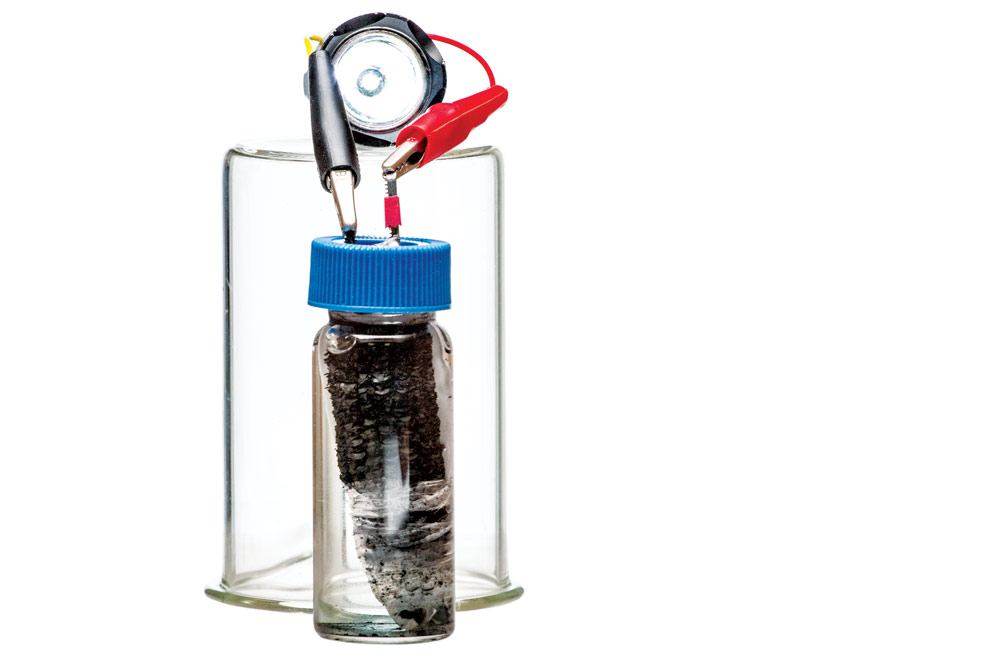Power Up
This corncob-biochar supercapacitor generates enough energy to power an LED bulb.
Photo: L. Brian Stauffer
University of Illinois researchers report that a wood-based technology can produce as much power as today’s activated-carbon supercapacitors at a fraction of the cost—and with environmentally friendly byproducts, too.
Biochar is a type of charcoal that enhances soil health created under special conditions. The result of natural or human-made forces—such as forest fires or the 2,000 year-old practice of transforming agricultural waste into a soil-booster—biochar is a carbon-rich material that exhibits a high porosity and fine grain. It has been shown to improve nutrient-depleted soil, elevate water quality, and maintain soil vitality. In a laboratory setting, biochar can be made by heating wood or other plant-based materials in a low-oxygen chamber.
Scientists at the University of Illinois recently revealed another promising application for biochar, which they claim can be used in supercapacitors. Similar to high-potency batteries, supercapacitors provide instant and constant energy for applications in electronics, transportation, and renewable power. They are typically made of activated carbon, which is derived from fossil fuels and requires expensive, chemically intensive methods to ensure an optimized degree of porosity.
Based on preliminary tests, the researchers produced a promising alternative using biochar, activating it with a mild nitric acid to remove impurities. Not only do the scientists claim the new material promises a significant reduction in material costs, but also a greatly improved environmental record, given the elimination of highly corrosive chemicals and a reduction in embodied energy.
“Supercapacitors are power devices very similar to our batteries,” study leader Junhua Jiang, a senior research engineer at the Illinois Sustainable Technology Center at the University of Illinois, said in a statement. “The material costs of producing wood-biochar supercapacitors are five to 10 times lower than those associated with activated carbon.”
The team found when a biochar supercapacitor has reached the end of its useful life, its crushed electrodes can be used as an organic soil amendment that increases fertility.
Jiang and his colleagues’ work reinforces a broadening trend involving the replacement of technically sophisticated yet resource-intensive materials with widely available natural substitutes. From biophotovoltaics replacing silicon PVs to mycological biocomposites replacing XPS insulation, the rediscovery and utilization of organic materials in advanced applications represents a retooling of global industrial processes.
Blaine Brownell, AIA, writes the “Mind & Matter” column for our sister brand, Architect, where the original version of this article appeared.



